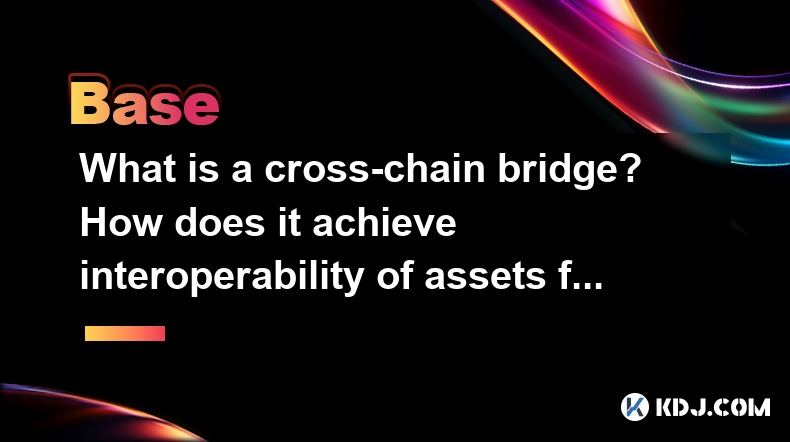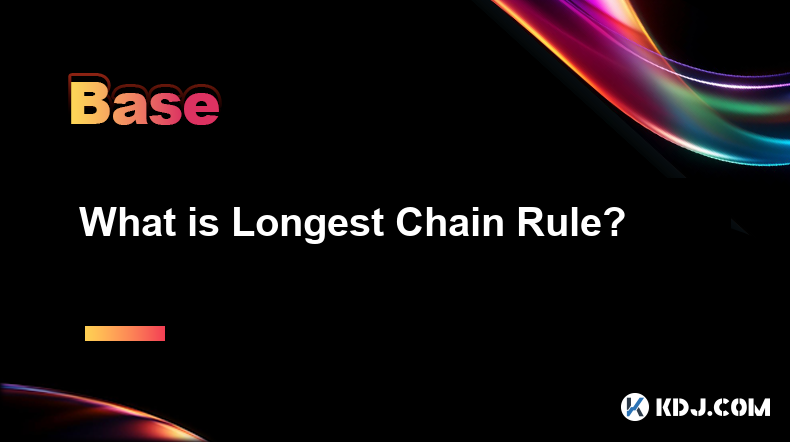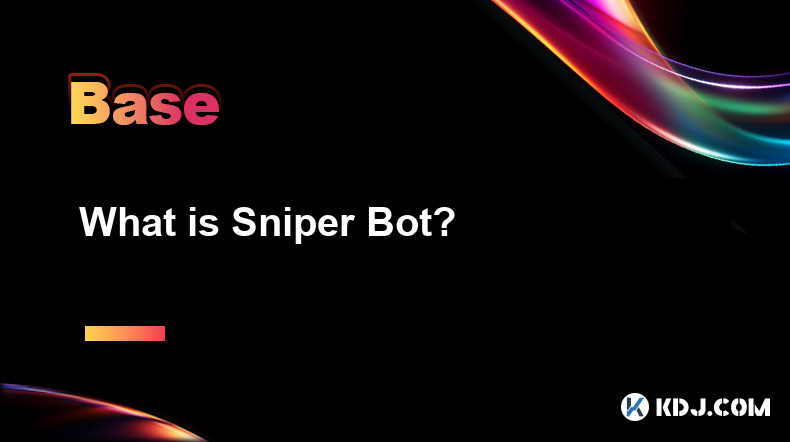-
 Bitcoin
Bitcoin $79,309.9469
5.46% -
 Ethereum
Ethereum $1,575.4794
6.76% -
 Tether USDt
Tether USDt $0.9996
0.03% -
 XRP
XRP $1.8684
10.75% -
 BNB
BNB $559.1592
4.86% -
 USDC
USDC $0.9998
-0.02% -
 Solana
Solana $108.9193
9.75% -
 Dogecoin
Dogecoin $0.1493
10.49% -
 TRON
TRON $0.2326
3.85% -
 Cardano
Cardano $0.5862
10.61% -
 UNUS SED LEO
UNUS SED LEO $8.9694
0.72% -
 Toncoin
Toncoin $3.1094
5.06% -
 Chainlink
Chainlink $11.6110
10.41% -
 Avalanche
Avalanche $17.1493
12.22% -
 Stellar
Stellar $0.2310
12.64% -
 Shiba Inu
Shiba Inu $0.0...01132
6.17% -
 Hedera
Hedera $0.1578
22.08% -
 Sui
Sui $2.0151
12.13% -
 MANTRA
MANTRA $6.2854
6.64% -
 Polkadot
Polkadot $3.5990
7.58% -
 Bitcoin Cash
Bitcoin Cash $276.8413
7.33% -
 Litecoin
Litecoin $71.4393
9.84% -
 Dai
Dai $1.0000
0.01% -
 Ethena USDe
Ethena USDe $0.9990
0.07% -
 Bitget Token
Bitget Token $4.1736
10.38% -
 Pi
Pi $0.5864
5.86% -
 Hyperliquid
Hyperliquid $11.9119
22.51% -
 Monero
Monero $207.4588
8.04% -
 Uniswap
Uniswap $5.1898
7.27% -
 OKB
OKB $52.1447
2.68%
What is a cross-chain bridge? How does it achieve interoperability of assets from different blockchains?
Cross-chain bridges enable asset and data transfer between blockchains, enhancing dApp functionality and user experience while increasing market liquidity.
Apr 06, 2025 at 05:01 pm

A cross-chain bridge is a crucial technology in the cryptocurrency ecosystem that enables the transfer of assets and data between different blockchain networks. This interoperability is essential for enhancing the functionality and efficiency of decentralized applications (dApps) and for allowing users to leverage the unique features of various blockchains. By facilitating the seamless movement of assets across chains, cross-chain bridges play a pivotal role in the broader adoption and integration of blockchain technology.
What is a Cross-Chain Bridge?
A cross-chain bridge is essentially a protocol or a set of smart contracts that connect two or more blockchain networks. These bridges allow for the transfer of tokens, data, and other digital assets from one blockchain to another. The primary goal of a cross-chain bridge is to enable interoperability, which means that assets and information can be used across different blockchain ecosystems without being confined to a single network.
How Does a Cross-Chain Bridge Work?
The operation of a cross-chain bridge involves several key steps to ensure the secure and efficient transfer of assets. Here's a detailed look at how these bridges function:
Locking and Minting: When a user wants to transfer an asset from Blockchain A to Blockchain B, the asset is first locked on Blockchain A. This means that the asset is held in a smart contract on the original blockchain, making it temporarily unavailable for use. Simultaneously, an equivalent amount of the asset is minted on Blockchain B. This minted asset is a representation of the original asset and can be used within the new blockchain ecosystem.
Burning and Unlocking: When the user decides to move the asset back to Blockchain A, the minted asset on Blockchain B is burned, or destroyed. This action triggers the smart contract on Blockchain A to unlock the original asset, making it available for use again on the original blockchain.
Atomic Swaps: Some cross-chain bridges use atomic swaps, which are smart contract-based transactions that ensure the exchange of assets between two parties occurs simultaneously. If one part of the transaction fails, the entire swap is canceled, ensuring that neither party loses their assets.
Validators and Relayers: To maintain the integrity and security of the bridge, validators and relayers are often employed. Validators verify the transactions and ensure that the assets are correctly locked and minted, while relayers facilitate the communication between the different blockchains.
Types of Cross-Chain Bridges
There are several types of cross-chain bridges, each with its own method of achieving interoperability:
Centralized Bridges: These bridges are operated by a central entity that manages the locking and minting of assets. While they can be more efficient, they also introduce a single point of failure and potential security risks.
Decentralized Bridges: These bridges operate without a central authority, relying on a network of nodes or validators to manage the transfer of assets. Decentralized bridges are generally considered more secure and resilient but can be more complex to set up and use.
Hybrid Bridges: These bridges combine elements of both centralized and decentralized models, aiming to balance efficiency and security.
Benefits of Cross-Chain Bridges
Cross-chain bridges offer several significant benefits to the cryptocurrency ecosystem:
Enhanced Liquidity: By allowing assets to move freely between different blockchains, cross-chain bridges increase the overall liquidity of the market. This can lead to more efficient trading and better price discovery.
Improved User Experience: Users can access a wider range of assets and services without being limited to a single blockchain. This flexibility can enhance the overall user experience and encourage broader adoption of blockchain technology.
Interoperability of dApps: Developers can build decentralized applications that leverage the strengths of multiple blockchains, leading to more robust and versatile dApps.
Risk Diversification: By spreading assets across different blockchains, users can diversify their risk and protect against potential vulnerabilities in any single network.
Challenges and Risks
Despite their many benefits, cross-chain bridges also face several challenges and risks:
Security Concerns: The complexity of cross-chain bridges can introduce new security vulnerabilities. If a bridge is compromised, it could lead to the loss of locked assets.
Regulatory Uncertainty: The regulatory environment for cross-chain bridges is still evolving, which can create uncertainty and potential legal risks for users and developers.
Scalability Issues: As the number of transactions increases, some cross-chain bridges may struggle to maintain performance and efficiency.
User Experience: The process of using a cross-chain bridge can be complex and intimidating for new users, potentially hindering adoption.
Examples of Cross-Chain Bridges
Several cross-chain bridges are currently in operation, each with its own unique features and use cases:
Wrapped Bitcoin (WBTC): WBTC is a tokenized version of Bitcoin that can be used on the Ethereum blockchain. Users can lock their Bitcoin on a custodial platform and receive an equivalent amount of WBTC, which can then be used in Ethereum-based dApps.
Polkadot: Polkadot is a multi-chain network that allows different blockchains to interoperate and share information. It uses a relay chain to facilitate communication between parachains, which are individual blockchains within the Polkadot ecosystem.
Cosmos: Cosmos is another interoperability platform that enables the creation of interconnected blockchains. It uses the Inter-Blockchain Communication (IBC) protocol to facilitate the transfer of assets and data between different blockchains.
Thorchain: Thorchain is a decentralized liquidity network that allows users to swap assets across different blockchains without the need for a centralized intermediary. It uses a network of nodes to manage the locking and minting of assets.
Frequently Asked Questions
Q: How do I choose the right cross-chain bridge for my needs?
A: When selecting a cross-chain bridge, consider factors such as security, fees, supported assets, and user experience. Research the bridge's track record and read user reviews to ensure it meets your requirements.
Q: Can I use a cross-chain bridge to transfer any type of asset?
A: Not all cross-chain bridges support the transfer of every type of asset. Some bridges are designed specifically for certain tokens or cryptocurrencies, so it's important to check the bridge's documentation to see if it supports the asset you want to transfer.
Q: What happens if a cross-chain bridge is hacked?
A: If a cross-chain bridge is compromised, the locked assets could be at risk. To mitigate this, many bridges use decentralized security measures and insurance funds to protect users. Always use reputable and well-audited bridges to minimize the risk of hacks.
Q: Are there any fees associated with using a cross-chain bridge?
A: Yes, most cross-chain bridges charge fees for the transfer of assets. These fees can vary depending on the bridge and the specific transaction. It's important to review the fee structure before using a bridge to ensure it aligns with your budget.
Disclaimer:info@kdj.com
The information provided is not trading advice. kdj.com does not assume any responsibility for any investments made based on the information provided in this article. Cryptocurrencies are highly volatile and it is highly recommended that you invest with caution after thorough research!
If you believe that the content used on this website infringes your copyright, please contact us immediately (info@kdj.com) and we will delete it promptly.
- Wyoming Is Launching a Stablecoin Later This Year, Which Could Be the First Issued by a Public Entity in the U.S.
- 2025-04-08 14:20:12
- BNB vs SOL: Which Crypto to Invest in?
- 2025-04-08 14:20:12
- Big News for XRP as Ripple CEO Meets with Trump and Sparks Intrigue Within the Cryptocurrency Community Hinting at Promising Developments.
- 2025-04-08 14:15:12
- Interactive Brokers Expands Cryptocurrency Portfolio by Adding Four Major Altcoins
- 2025-04-08 14:15:12
- US stocks fall on Wednesday, dragged down by a sharp sell-off in tech stocks, as renewed trade war concerns rattle investors
- 2025-04-08 14:10:12
- Just 24 Hours After Adding Its Name to the Roster of Companies Pursuing a Bitcoin (BTC) Treasury Strategy, GameStop (GME) — Led by Its CEO Ryan Cohen — Is Also Adding Its Name to Those Firms Issuing Convertible Debt to Raise Funds for BTC Acquisition
- 2025-04-08 14:10:12
Related knowledge

What is Serenity?
Apr 08,2025 at 02:00pm
Serenity, also known as Ethereum 2.0, represents a major upgrade to the Ethereum blockchain. This ambitious project aims to address the scalability, security, and sustainability issues faced by the current Ethereum network. Serenity is not a single update but a series of upgrades that will transform Ethereum into a more efficient and robust platform. Th...

What is Finality Gadget?
Apr 08,2025 at 04:14am
The Finality Gadget is a crucial component in the architecture of certain blockchain networks, particularly those that utilize a hybrid consensus mechanism. It plays a pivotal role in ensuring the finality of transactions, which means that once a transaction is confirmed, it cannot be altered or reversed. This article delves into the intricacies of the ...

What is Longest Chain Rule?
Apr 08,2025 at 07:50am
The Longest Chain Rule is a fundamental concept in blockchain technology, particularly in the context of cryptocurrencies like Bitcoin. This rule is crucial for maintaining the integrity and security of the blockchain network. In essence, the Longest Chain Rule dictates that the valid blockchain is the one with the most cumulative proof-of-work, which i...

What is Orphan Block?
Apr 08,2025 at 05:00am
What is an Orphan Block?In the world of cryptocurrencies, particularly in blockchain technology, the term orphan block is frequently encountered. An orphan block is a block that has been mined and added to the blockchain but is later discarded or replaced by another block. This phenomenon occurs due to the decentralized nature of blockchain networks, wh...

What is Mempool?
Apr 08,2025 at 12:36pm
What is Mempool?In the world of cryptocurrencies, particularly Bitcoin, the term Mempool is frequently mentioned. But what exactly is a Mempool, and why is it important? A Mempool, short for memory pool, is a critical component of the blockchain network that serves as a temporary storage area for unconfirmed transactions. When a user initiates a transac...

What is Sniper Bot?
Apr 07,2025 at 10:43pm
A Sniper Bot is a type of automated trading software used within the cryptocurrency market to execute trades at optimal times, often milliseconds before other traders. These bots are designed to take advantage of new token listings, price fluctuations, and other market opportunities to buy or sell assets quickly and efficiently. The primary goal of a Sn...

What is Serenity?
Apr 08,2025 at 02:00pm
Serenity, also known as Ethereum 2.0, represents a major upgrade to the Ethereum blockchain. This ambitious project aims to address the scalability, security, and sustainability issues faced by the current Ethereum network. Serenity is not a single update but a series of upgrades that will transform Ethereum into a more efficient and robust platform. Th...

What is Finality Gadget?
Apr 08,2025 at 04:14am
The Finality Gadget is a crucial component in the architecture of certain blockchain networks, particularly those that utilize a hybrid consensus mechanism. It plays a pivotal role in ensuring the finality of transactions, which means that once a transaction is confirmed, it cannot be altered or reversed. This article delves into the intricacies of the ...

What is Longest Chain Rule?
Apr 08,2025 at 07:50am
The Longest Chain Rule is a fundamental concept in blockchain technology, particularly in the context of cryptocurrencies like Bitcoin. This rule is crucial for maintaining the integrity and security of the blockchain network. In essence, the Longest Chain Rule dictates that the valid blockchain is the one with the most cumulative proof-of-work, which i...

What is Orphan Block?
Apr 08,2025 at 05:00am
What is an Orphan Block?In the world of cryptocurrencies, particularly in blockchain technology, the term orphan block is frequently encountered. An orphan block is a block that has been mined and added to the blockchain but is later discarded or replaced by another block. This phenomenon occurs due to the decentralized nature of blockchain networks, wh...

What is Mempool?
Apr 08,2025 at 12:36pm
What is Mempool?In the world of cryptocurrencies, particularly Bitcoin, the term Mempool is frequently mentioned. But what exactly is a Mempool, and why is it important? A Mempool, short for memory pool, is a critical component of the blockchain network that serves as a temporary storage area for unconfirmed transactions. When a user initiates a transac...

What is Sniper Bot?
Apr 07,2025 at 10:43pm
A Sniper Bot is a type of automated trading software used within the cryptocurrency market to execute trades at optimal times, often milliseconds before other traders. These bots are designed to take advantage of new token listings, price fluctuations, and other market opportunities to buy or sell assets quickly and efficiently. The primary goal of a Sn...
See all articles






















































































